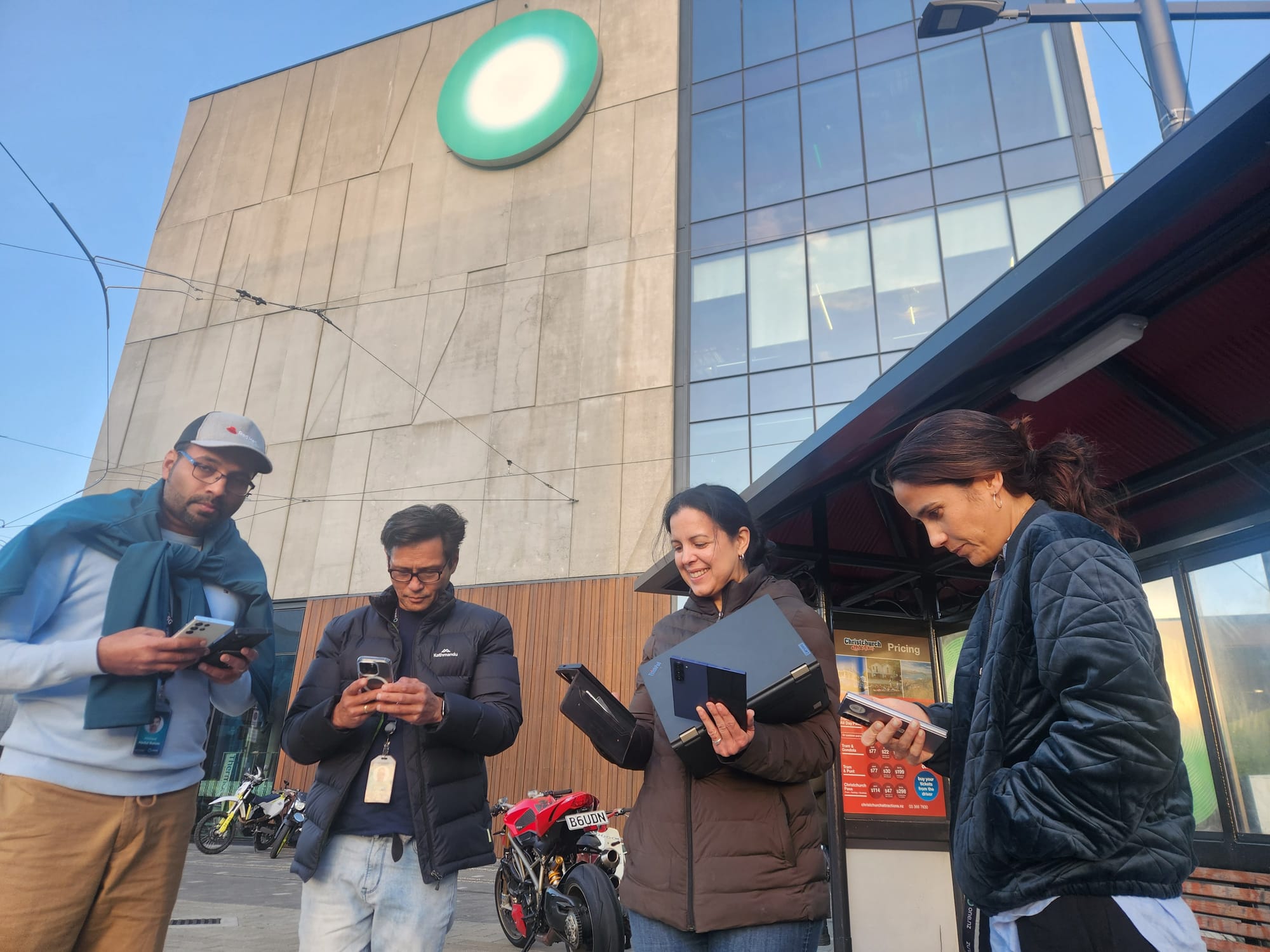Deloitte report makes powerful case for more fibre

Report: Fibre's best is yet to come
A report from Deloitte says New Zealand’s fibre infrastructure has already delivered huge economic benefits, but there is much more to come.
In Unleashing the power of digital fibre infrastructure in New Zealand, the professional services firm says fibre contributed $31 billion between 2011 and 2023. It grew the economy by $8.8 billion in 2023. That’s nothing compared to what is coming. Deloitte says it could add a further $163 billion over the next ten years.
New Zealand’s productivity has been sluggish for years. Liza Van der Merwe, Deloitte Access Economics lead partner, says fibre can help lift productivity as it enables innovation and unlocks business transformation.
Addressing digital equity
To get there, among other things, she says we need to address digital equity by boosting fibre access and uptake.
Also on her list are: “Driving innovation with AI, accelerating adoption of digital tools and transformation in small businesses, seizing opportunities to grow exports, leveraging data and digital technologies to enhance government services for businesses, and reviewing regulatory settings frequently”.
Chorus CEO Mark Aue says: “This isn’t just about economic value; having access to high-capacity connectivity has radically transformed how we live, work and play over the past decade.”
“How New Zealand takes advantage of fibre will define our success in unlocking the full productivity benefits and ensuring we remain competitive on the global stage.”
Analysis: Deloitte makes the case for more fibre
New Zealand’s UFB network reaches 87 percent of the nation. That leaves 13 percent of the population without fibre.
Until now, official wisdom says the cost of connecting the remainder is too high. Yet the Deloitte report suggests the cost of not connecting them will be far higher.
European nations aim for 100 percent fibre coverage. That may be too ambitious for us, but choosing not reach to 95 percent or further is leaving money and prosperity on the table.
Fibre will deliver close to $200 billion on an investment of $5 billion. It would cost $2 to 2.5 billion to get the network to 95 percent of the nation. The pay off would run to tens of billions. Getting to 99 percent might cost twice as much, but would still return many multiples of the initial investment.
If only roads could pay dividends at that level.
As the Rural Connectivity Communique story elsewhere in this week’s newsletter highlights, not having affordable internet options in those areas also creates a digital divide. Are we all OK with that?

One NZ edges closer to cell towers in the sky
One New Zealand says testing of its satellite to mobile service is “going well” in Christchurch. The company’s network engineers have successfully sent and received SMS networks using Starlink Direct to Cell.
Last year One NZ’s advertising promised customers 100 percent coverage in 2024. It may yet reach that target at a stretch if we understand coverage to mean text messaging and accept that the dog days of the summer break qualify as this year.
One NZ says it will only launch the service when a message can be sent or received within minutes. That requires more suitably equipped satellites to enter orbit. It will be some time before seamless messaging and voice calls arrive.
Resilient backup
Sharina Nisha, One NZ’s GM of network services put the project into perspective saying: “Satellite messaging will give us a resilient back-up for our ground-based mobile network. This will make it safer to explore our country and help businesses across New Zealand be more productive.”
She says: “We’re sending engineers up and down the country, putting the Starlink Direct to Cell service through its paces, so we can be confident it works under all kinds of real-world conditions before we get this new tech into the hands of our customers.”
Starlink to join TDL party as TDL draft determination drops
Starlink’s New Zealand revenue has passed the threshold where it becomes liable to pay New Zealand’s Telecommunications Development Levy.
Telecommunications commissioner Tristan Gilbertson says SpaceX’s low earth orbit satellite broadband network will pay a share of the levy in line with its $74 million qualified revenue.
The TDL is a fund set up to to pay for the kind of non-commercial telecommunications services that were once provided by the state-owned monopoly. This includes 111 emergency calling and services for deaf people. In the past the TDL was used to pay for rural broadband projects.
Each year the TDL collects $12 million from all telecoms companies with revenue above a $10 million threshold. Each company pays proportionately depending on their share of the total qualifying revenue.
In practice this means Spark, One NZ, 2degrees and Chorus pay most of the levy. This year the four big players’ share of the total is 84 percent. SpaceX’s contribution is likely to be around 1.5 percent of the total.
The TDL is unpopular with the telecommunications industry which rightly points out other sectors are not subject to similar additional taxes.
Rural Connectivity Communique rails against postcode lottery
Uneven distribution of telecommunications services in regional New Zealand rankled with attendees at this year’s Rural Connectivity Symposium.
The post event communique says the level of service amounts to a postcode lottery.
Consumer NZ CEO Jon Duffy says “There shouldn’t be a second-class position… Customers should be able to access great service regardless of location.” He says healthy markets, where competition offers fair pricing no matter the location, would benefit rural customers.
Many speakers called for further investment in areas where connectivity is available but not affordable. There is evidence of a digital divide, especially in rural areas where low-income households are shut out of the internet.
Tuanz CEO Craig Young says: “We know there is no silver bullet, but we need an ambitious vision to ensure everyone who needs and wants to be connected can be.
New Zealand and UK combine to tackle satellite litter
Space agencies from New Zealand and the UK have agreed on a plan to remove and service satellites that are close together or making contact.
The deal will help both nations to run so-called ‘rendezvous and proximity’ missions to clean up space debris, refuel satellites and otherwise service satellites. All of this is essential to keep satellites in orbit and maintain networks.
A Ministry of Business, Innovation and Employment media release says there’s an urgent need for new technology to perform these tasks as it means satellites can operate for longer.
Lawton to lead One NZ’s enterprise mobility sales
Jelena Lawton is One New Zealand’s new enterprise mobility sales lead. It’s a role that means working with the telco’s largest customers to understand their needs and give them the tools they need.
Lawton comes to the role after close to six years working in an enterprise mobility role for Apple. She previously worked for Spark and 2degrees.
5G uplink speed hits 447 Mbps at Telstra site
Australian telecoms giant Telstra worked with Ericsson to beat existing records and clock an upload speed of 447 Mbps on a 5G standalone network.
In a media statement Ericsson notes uplink performance is essential for high-definition live streaming, video conferencing and data heavy applications. While that’s true, high definition video works fine speeds well below 447 Mpbs.
In other news...
‘Lifeline’ tax rebate helps New Zealand video game industry return to strong growth
The NZ Herald’s Chris Keall looks at the game industry’s rebound after the government moved to counter aggressive Australian attempts to woo companies with sweetheart tax deals:
After stalling growth and an “existential crisis” over the previous two years, the local video gaming industry grew 26% to $548 million in revenue in the 2024 financial year.
It was the first time the industry had crossed the half-billion dollar mark – with most of its takings, as usual, coming from exports – according to the New Zealand Game Developers Association’s (NZGDA) annual survey.
Revenue per employee shot up to $499,500 from last year’s $390,000 as the number of people employed in the industry – 1097 – only nudged slightly ahead of 2023′s revised total of 1060.
IPv6 may already be irrelevant – but so is moving off IPv4, argues APNIC's chief scientist
At The Register Simon Sherwood reports on Geoff Huston’s thoughts about IPv6 and how content delivery networks means the protocol is not as essential as once thought.
Foldable smartphones: A flip or a flop?
Peter Griffin’s story is behind a paywall so you’ll need a subscription to read. While the phones are technically impressive but have not taken off, they still make up less than two percent of the total handset market.
Netflix third-quarter subscribers barely beat estimates as ad-tier members jump 35%
Streaming is set to look more like old school commercial television as Netflix notes its advertising supported service accounted for more than half of all new sign-ups in countries where the option is available.
Member discussion